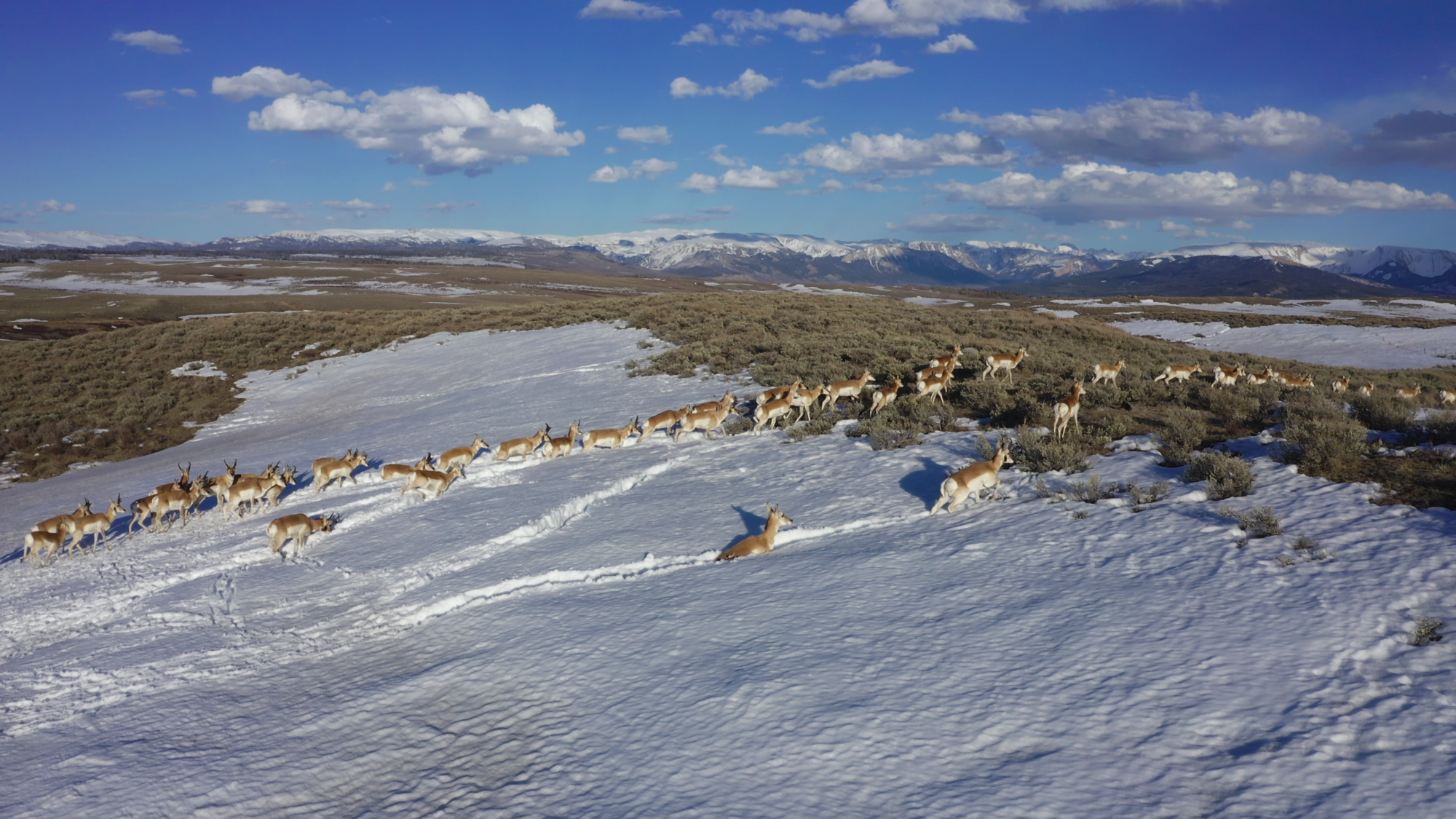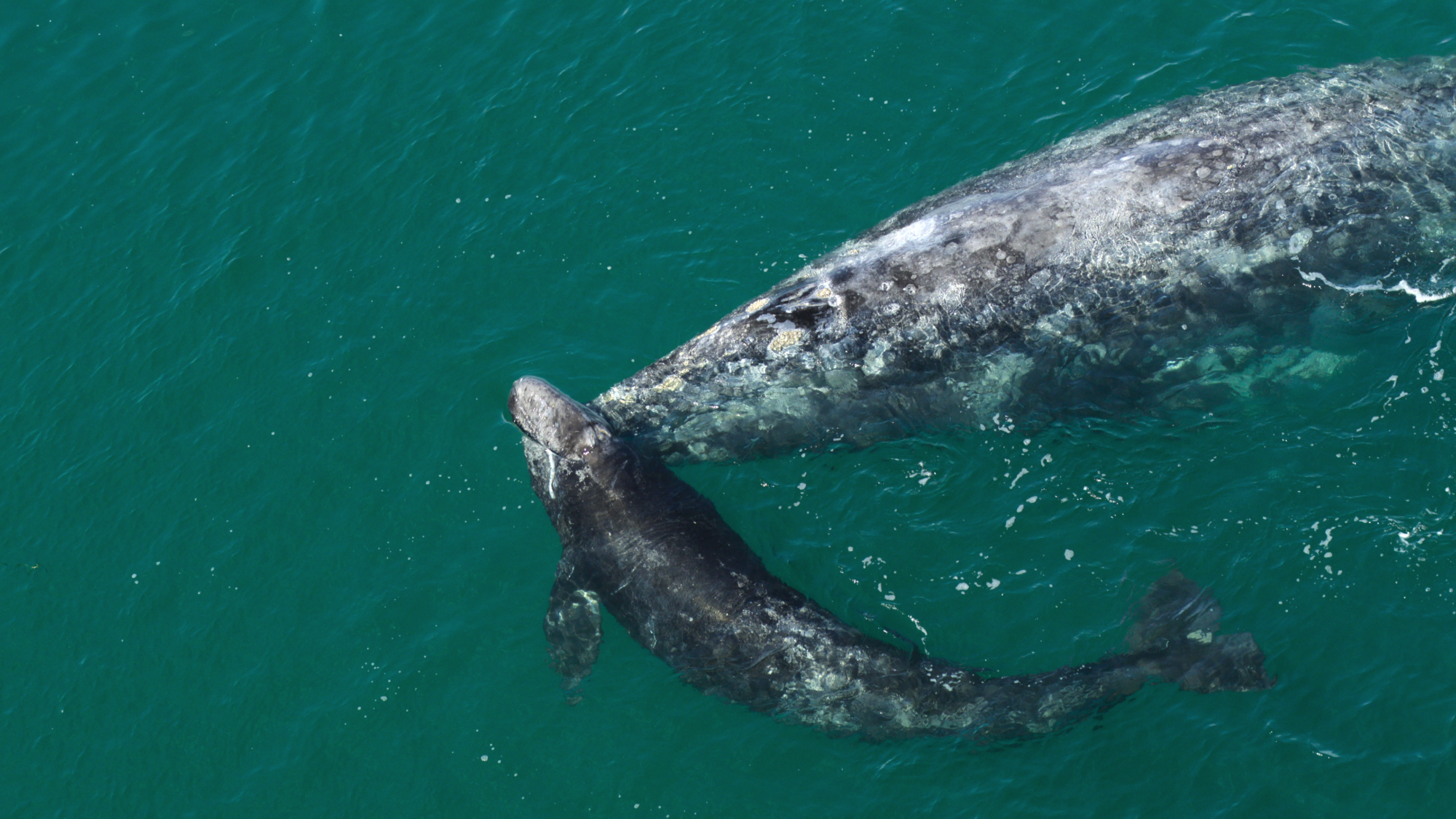— Episode synopsis —
When the northern end of the Earth is tilted away from the sun, many animals start to make their annual trek north. For those crossing North America, that means overcoming human obstacles: pronghorn antelope head for Grand Teton, but ranch fences and highways stretch across their path; snow geese rest along their Missouri flyway, where they trade the risks of hunters for the abundant food found throughout the farm belt. Winter in the Northern Hemisphere also means warm water in the south, and it’s the perfect time for gentoo penguins to find land on which to breed; they’re the world’s fastest penguin, but leopard seals still chase them down as they return to the water. And at the Equator, where the temperature mostly stays constant, gray whales relax with their calves before embarking on a long swim to the Bering Sea for summer. The road ahead is riddled with dangers – and not everyone will make it safely – but preserving their freedom to make the journey is up to us all.
Gentoo Penguins in Antarctica
The short summer window to watch gentoo penguins feeding their chicks very nearly closed before the team could reach the Antarctic. Thanks to COVID, they kept getting bumped from flights, arriving with only four weeks left to capture the birds making commutes through the sea to find food for their young. The crew also captured the leopard seals who feed on these penguins, filming both ambushes close to shore and one rarely-seen open water chase.
Snow Geese in Loess Bluffs, Missouri
Potentially the first time these huge flocks of snow geese have been filmed with a drone, an incredibly challenging exercise during which the team learned the hard way that in the battle of goose vs. drone, the goose will win.
Pronghorn Migration from Southern Wyoming to Grand Teton National Park
This sequence required multiple shoots over different stages of the pronghorns’ journey, through some of the least-accessible territory in the lower 48 states, with crews camping out in high mountain passes, fending off bears, and suffering frostbite at temperatures as low as 14 degrees Fahrenheit.

Gray Whales in Baja, Mexico
This shoot was over a year in the making, but the challenges in timing resulted in an incredible, unexpected discovery: the team was able to shoot a congregation of these enormous mammals at a previously unknown sand bar, where mother whales and their calves hang out for a few weeks before heading north.
Army Ants in the Amazon Rainforest
It is incredibly rare to film the migratory phase of army ants, and even rarer still to capture the queen and her supersize larvae as they move along the column. Relying on infrared lights under cover of darkness, the team spent sleep- less nights in the pitch-black jungle, where they were most certainly not alone.
Gray Whale Migration off California
Migrations are growing tougher and more vital than ever in our changing world. The number of gray whale calves born in Baja was at its lowest since 1994 in the season the team was filming, and the number of total migrating gray whales down 40 percent. Filming the whales as they crossed the busy beaches of Newport and the hazardous shipping lanes of the Port of Los Angeles, the team was able to capture the heart-breaking moment when a pod of orcas attacked a mother and her calf in a relentless attack that lasted for over two hours. Once the calf was dragged underwater for the last time, the experience left the crew speechless – and left the mother whale to continue her migration alone.

